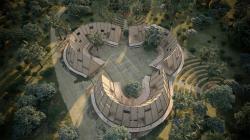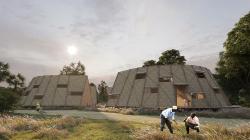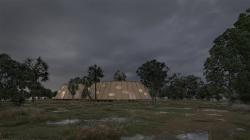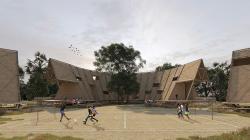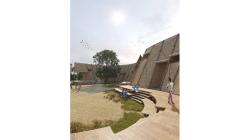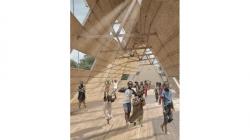In Senegal, villages were formed around the tree because of the myths about the baobab tree in their culture, and this was the idea of forming spaces around the site trees, which was a good response to one of the issues of the competition, which was to preserve the trees. The formation of spaces around trees also symbolically referred to the theme of unity, which was one of the design concepts.
Initially, a two-meter offset was formed around the trees to conserve the roots of the trees. As the space required to preserve the trees became clear, an attempt was made to explain the exact geometry of the form. Two circles with a radius of 8 meters surrounded the central trees of the site, and to provide the area of the yard and playground, a third circle was added to the circles for this purpose. According to the determined geometry, circular spaces were formed around the courtyards, which eventually connected to each other and formed a unified form.
After the initial stain was created to create the general form of the school, according to the typology of the building and the weather conditions, a triangular shape was used to form the roof and walls of the school, where the roof and the wall were connected.
To access the inner courtyard from the outside of the site, the integrated form was cut from three areas to establish this connection. To create dynamic circulation, two movement paths were considered in the inner and outer walls, one of them was dedicated to the ramp for the disabled.
In the three separate spaces created, according to the demand of the competition, which was based on phasing in 5 stages, the required spaces and general spots were formed.
To facilitate the construction method and cost-effectiveness, an attempt was made to use native materials such as wood and straw in the project, and to adopt a simple construction method.
2022
The empty spaces around the school within the site, due to the importance of agriculture in the region and its education to students, were allocated to agricultural lands, and to supply water to these lands, rainwater management and its optimal use were considered in the design.
Head Architect: Maziar Dolatabadi
Lead Architect: Deniz Ebrahimi Azar
Design team: Reza Valinejad, Mahsa Rajabpour, Hadiis Karimi, Sona Taghipour
Interior Design & Rendering: Donya Yosefi
Model: Aria Rahiminejad, Fatemeh Miri

